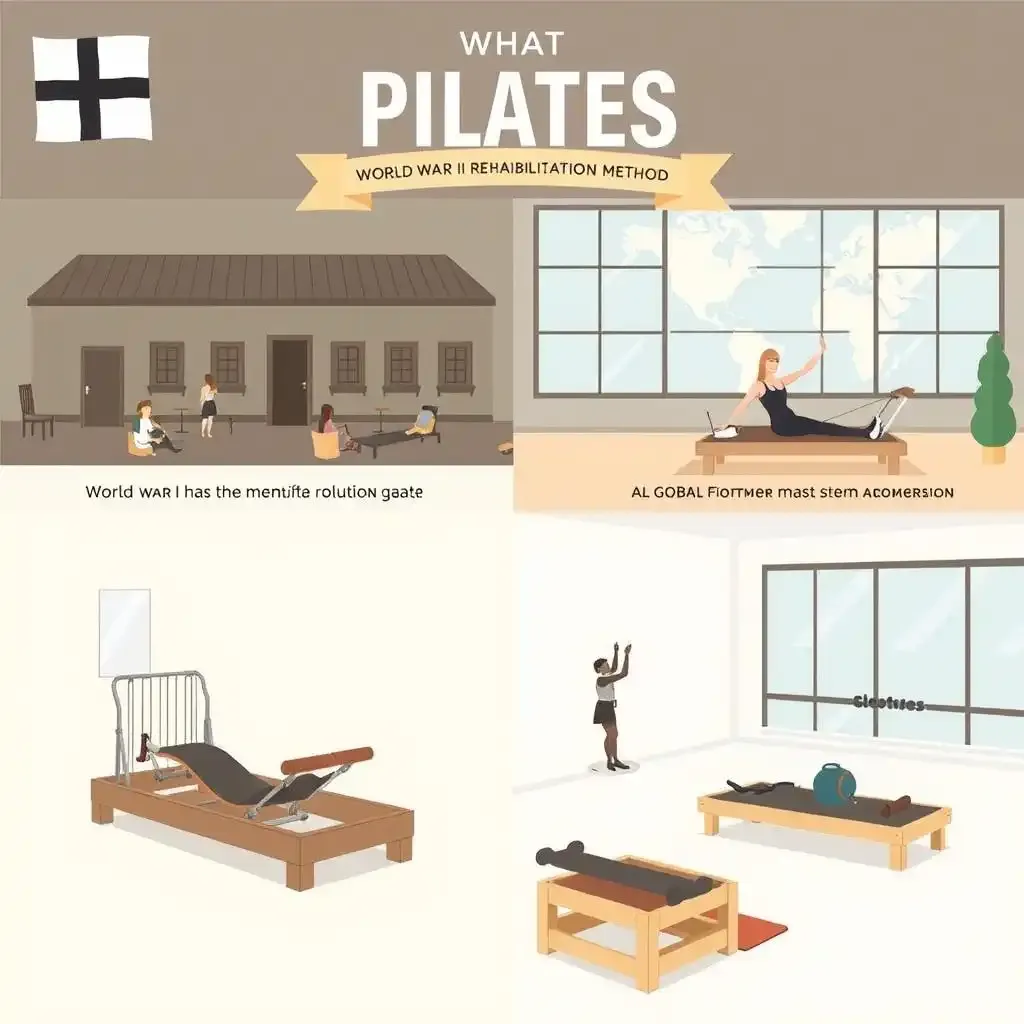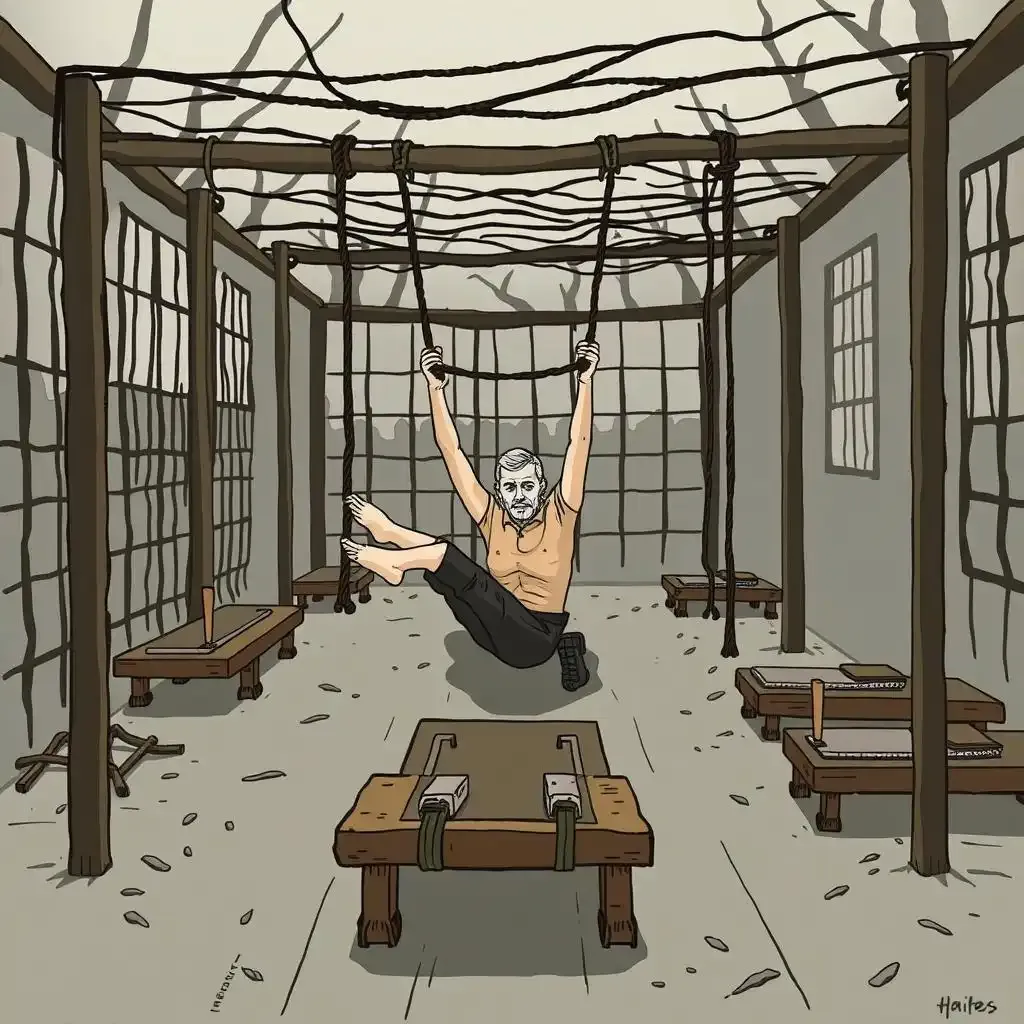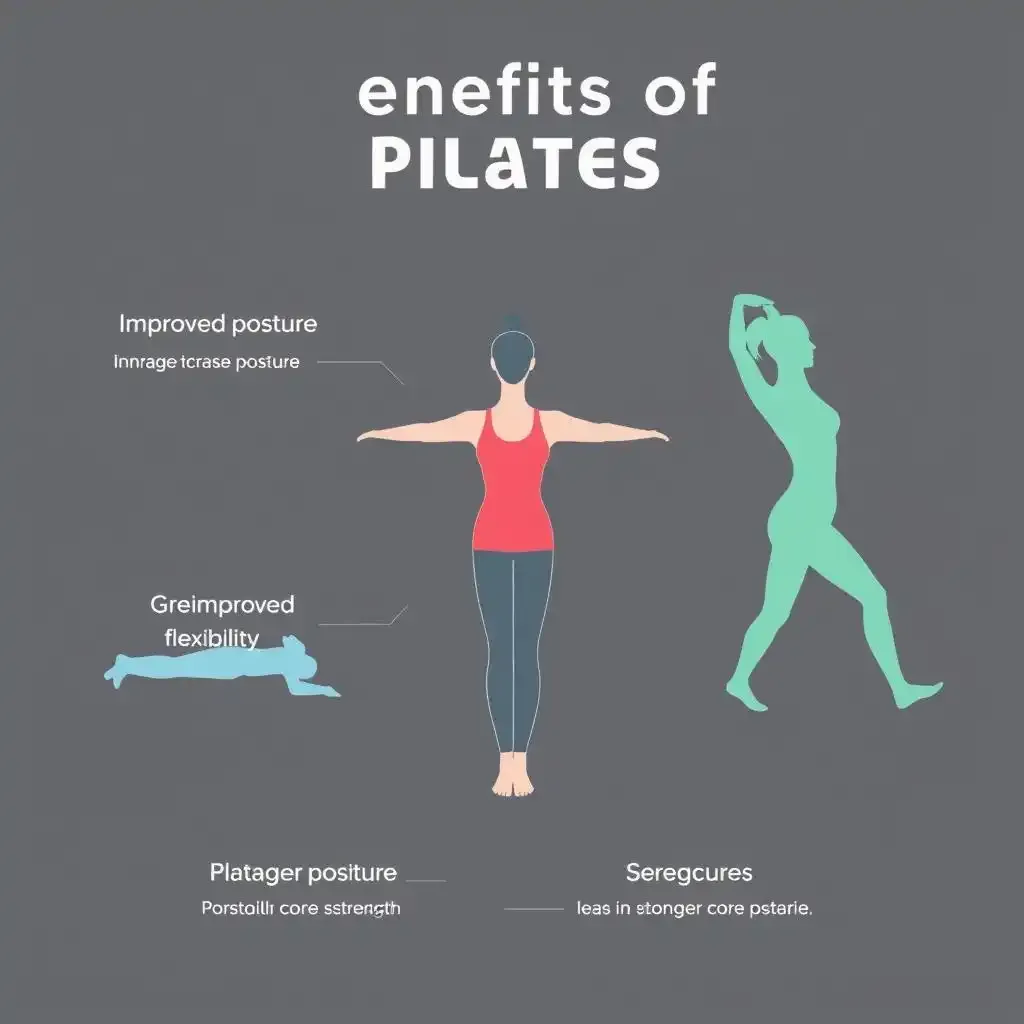Table of Contents
Ever wondered about the history of Pilates? It's a fitness craze now, but its roots are surprisingly military. Many people think of Pilates as just another trendy workout, but the truth is far more interesting. In fact, the very creation of Pilates was deeply intertwined with the experience of soldiers during World War I. This article will explore the fascinating relationship between Pilates and the military, revealing how a system born in an internment camp transformed into a global fitness phenomenon. We'll examine into Joseph Pilates' wartime innovations, examine the ongoing use of Pilates within military training, and explore how this method, originally designed for rehabilitation, benefits everyone, whether they're a soldier or a civilian trying to improve their fitness. Join us on kizworld as we uncover the unexpected story of how Pilates was, in a very real way, made for soldiers.
Was Pilates Made For Soldiers? The Amazing Truth!
Was Pilates Made for Soldiers? The Surprising Origins of a Fitness Phenomenon
A Wartime Workout
Hey there, fellow fitness fanatics! Let's talk about Pilates – that amazing exercise system that's taken the world by storm. But did you know its story starts in a rather unexpected place? It all began during World War I, believe it or not! Joseph Pilates, the man behind the method, wasn't just some random gym dude. He was a seriously impressive gymnast and boxer! Imagine a super-fit guy who’d seen some serious action. He ended up in an internment camp on the Isle of Man during the war. Now, visualize this: instead of moping around, Joseph used his time to create a system to help his fellow prisoners stay healthy and strong. He even invented special exercise equipment using whatever he could find – talk about resourcefulness! This wasn't your average prison workout; it was the genesis of Pilates! He used his knowledge of human anatomy and movement to craft a program designed to rehabilitate and strengthen, laying the groundwork for what we know and love today. It's pretty inspiring, right? Want to learn more about how Pilates transformed my body? Check out my experience: Pilates body transformation.
- Joseph Pilates was a gymnast and boxer.
- He created Pilates in a World War I internment camp.
- He invented special equipment using whatever he could find.
From Rehabilitation to Revolution
Think of Pilates as the ultimate rehabilitation program, but way cooler. Joseph’s original goal wasn't to create a global fitness sensation; it was to help injured soldiers recover. He knew that movement was key to healing, and his method focused on strengthening the core and improving flexibility. It was all about controlled movements, precision, and building strength from the inside out. It’s kinda like building a really strong tower – you need a solid foundation (your core), and then you can build up. Pilates is all about that solid foundation. And guess what? It works! His methods quickly gained popularity, spreading from the internment camp to the wider world. It wasn't long before people started realizing that Pilates wasn't just for injured soldiers; it was for *everyone* who wanted to get stronger, more flexible, and feel amazing. Interested in whether Pilates is a good workout for you? Is Pilates good for you? This article will help you decide.
Benefit | Description |
|---|---|
Improved Core Strength | Pilates strengthens your core muscles, improving posture and stability. |
Increased Flexibility | Pilates helps improve flexibility and range of motion. |
Reduced Risk of Injury | Stronger core muscles reduce the risk of injury during daily activities. |
Joseph Pilates' Wartime Innovations: From Internment Camp to Global Fitness
Okay, so imagine this: World War I. I'm not even born yet, but I can totally imagine the chaos. Joseph Pilates, this super-fit guy – a gymnast and boxer, seriously impressive – finds himself in a prisoner-of-war camp on the Isle of Man. It wasn't exactly a five-star resort, right? But instead of getting all mopey, Joseph used his time creatively. He saw a chance to help his fellow prisoners get stronger, healthier. He started creating exercise routines, even building his own equipment using whatever was lying around. It's like a crazy MacGyver situation, but with fitness! This wasn’t just some random workout; it was the beginning of something HUGE. He was using his knowledge of the body to design a system that healed and strengthened, a system built on controlled movements and core strength. It’s ingenious, really! Think of it like building a LEGO castle – you wouldn't start with the turrets, would you? You'd build a solid base first. That's what Pilates does; it strengthens your core, that’s your base, then you can build up from there. Want to know how Pilates changed *my* life? Read my story!
- He wasn't just some gym rat, he was a serious athlete.
- He turned a bad situation into a creative opportunity.
- He understood how the body worked and used that knowledge.
His methods weren't just about building muscles; they were about rehabilitation. He was helping injured prisoners recover, regain their strength and mobility. It’s amazing how he turned a negative situation into something so positive and impactful. He focused on controlled movements, precision, and strengthening the body from the inside out. Think of it as building a strong tree – you need deep roots (your core) before you can grow tall and strong branches (the rest of your body). He was a true pioneer, transforming a terrible situation into the foundation for a global fitness phenomenon. Pilates wasn't just a workout; it was a pathway to healing and well-being. Is Pilates cardio? Find out here!
Before Pilates | After Pilates |
|---|---|
Weak core | Stronger core |
Limited flexibility | Improved flexibility |
Poor posture | Better posture |
Joseph’s innovation wasn't just about the exercises themselves; it was about the *mind-body link*. He believed in the importance of mental focus and controlled breathing, making Pilates more than just physical exercise. It's a holistic approach to fitness, combining physical and mental well-being. It's like meditation and a workout all rolled into one! It’s a powerful combination that helped people recover and improve their overall health. Want to know more about the benefits? Check out this article!
The impact of his wartime work is undeniable. He didn’t just create exercises; he created a philosophy. He showed the world that even in the worst of times, you can find ways to improve your physical and mental well-being. This is why Pilates remains relevant today. It’s a testament to his creativity, resilience, and dedication to helping others. It’s a powerful reminder that even in difficult circumstances, we can find strength and healing. Curious about how Pilates can help you? Learn more here!
- Pilates is more than just exercise.
- It involves mental focus and controlled breathing.
- It's a holistic approach to fitness.
Joseph Pilates' Wartime Innovations: From Internment Camp to Global Fitness
Pilates and the Military Today: A Continuing Relationship
A Modern Military Method
So, Pilates started in a war camp, right? Crazy, huh? But it's not just a historical footnote. Pilates is *still* a big deal in the military today! I mean, it makes total sense. Soldiers need to be strong, flexible, and have amazing core strength – all things Pilates excels at. Think of it like this: a soldier needs to be able to carry heavy gear, move quickly and quietly, and recover from injuries quickly. Pilates builds that kind of strength and resilience. It's not about huge muscles; it's about functional strength – the kind that helps you perform your duties effectively. It's like a super-charged version of regular exercise; it's all about precision and control. I've even heard of some military units incorporating Pilates into their training regimens to improve soldier performance and reduce injuries. Want to know if Pilates is right for *your* fitness goals? Check out my thoughts on whether it's good for weight loss: Pilates for weight loss?
- Pilates builds functional strength.
- It improves flexibility and core strength.
- It helps prevent injuries.
Beyond the Battlefield
Pilates isn't just for soldiers, though. It's awesome for anyone! The principles of core strength, controlled movements, and body awareness are beneficial for everyone, regardless of their background. Whether you're a weekend warrior, a seasoned athlete, or just someone who wants to feel better in their body, Pilates can help. It's like a secret weapon for improving posture, increasing flexibility, and building strength without bulky muscles. Many civilians use Pilates for rehabilitation after injuries or surgery, but it's also a fantastic way to prevent injuries and improve overall physical fitness. It's become a super popular workout for people of all ages and fitness levels. And if you're wondering how many calories you burn doing Pilates, I've got you covered: Pilates calorie burn.
Benefit | Who it helps |
|---|---|
Improved Core Strength | Athletes, office workers, anyone! |
Increased Flexibility | People with stiff muscles, dancers, yogis |
Reduced Risk of Injury | Older adults, people recovering from injury |
Pilates and the Military Today: A Continuing Relationship
Beyond the Barracks: How Pilates Benefits Everyone, Soldier or Civilian
Okay, so we've talked about Pilates' military roots – pretty cool, huh? But here's the thing: Pilates isn't just for soldiers anymore. It's like a super-powered workout that's become a total game-changer for everyone, from busy moms to desk jockeys to, yes, even super-fit athletes. I mean, who *doesn't* want a stronger core, better posture, and more flexibility? It's like having a secret weapon for your body. And it's not just about looking good; Pilates helps prevent injuries, too. Think of it as preventative maintenance for your body – you know, like regular oil changes for your car, but way more fun.
Seriously, I've seen Pilates work wonders for people of all ages and fitness levels. My friend Sarah, a super-busy mom, uses it to de-stress and build strength. She says it's like a mini-vacation for her body and mind! And my uncle, who's recovering from a back injury, credits Pilates with getting him back on his feet and pain-free. He's even started hiking again – talk about a comeback story! It's truly amazing how versatile Pilates is. It’s not just about building huge muscles; it’s about building functional strength – the kind that helps you move better and feel better in your everyday life. Want to know how Pilates changed my life? Check out my story: .
Before Pilates | After Pilates |
|---|---|
Slouching posture | Improved posture, less back pain |
Limited flexibility | Greater range of motion, increased flexibility |
Weak core | Stronger core, improved stability |
One of the best things about Pilates is that it's super adaptable. You can modify exercises to fit your fitness level, whether you're a total beginner or a seasoned athlete. It's all about listening to your body and working at your own pace. I’ve found that’s particularly helpful when I’m feeling a little under the weather; I can still do a modified Pilates routine and feel some benefit. I'm not saying you'll become a superhero overnight (though, you might feel like one!), but you *will* notice a difference. I’ve even found it helps me sleep better! Want to know if Pilates is a good workout for you? Check out this post:
And let's be honest, who doesn't love a workout that doesn't leave you completely wiped out? Pilates is challenging, sure, but it's also surprisingly gentle on your joints. It's a fantastic way to build strength and flexibility without the high-impact stress of other workouts. I personally find that it gives me a sense of calm and focus, which is a nice bonus, especially considering it’s a workout! It’s a perfect blend of physical and mental well-being. Curious if Pilates burns calories? Find out here: .
- Pilates is low-impact, perfect for all fitness levels.
- It improves core strength, flexibility, and posture.
- It can help with injury prevention and rehabilitation.
So, whether you're a soldier looking to maintain peak physical condition or just someone looking to improve your overall health and well-being, Pilates is worth checking out. It’s a fantastic workout that's accessible to everyone, regardless of your background or fitness level. It’s more than just a workout; it’s a trip to a stronger, healthier, and more balanced you. If you are curious about the overall benefits, check out this article: .
Plus, there are tons of different Pilates styles to explore, from mat work to reformer classes, so you can find something that fits your personality and preferences. I’ve tried a few different styles and have found that each one offers a unique challenge and reward. Don't be afraid to experiment and find what works best for you. And remember, consistency is key! Even a short Pilates session a few times a week can make a huge difference. Maybe you're wondering if Pilates is right for weight loss? Check out this article: .
Pilates Style | Description |
|---|---|
Mat Pilates | Uses bodyweight and a mat for exercises. |
Reformer Pilates | Uses a specialized machine for resistance training. |
Chair Pilates | Uses a chair for support and added resistance. |
Beyond the Barracks: How Pilates Benefits Everyone, Soldier or Civilian
Final Thought
So, was Pilates made for soldiers? The answer is a resounding yes. From its humble beginnings in a World War I internment camp to its current use in military training and fitness programs worldwide, the link is undeniable. Joseph Pilates' ingenuity and dedication to rehabilitation laid the foundation for a fitness system that continues to benefit people of all backgrounds. While the methods have evolved, the core principles of controlled movements, core strength, and mindful exercise remain central to the practice, proving the enduring legacy of Pilates' wartime origins. Whether you're a soldier looking to enhance your physical conditioning or a civilian seeking a challenging and effective workout, Pilates offers a unique and rewarding path to improved fitness and well-being.